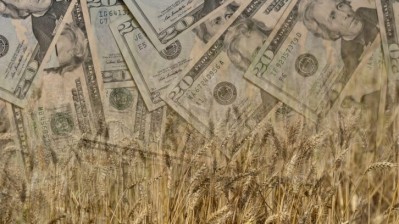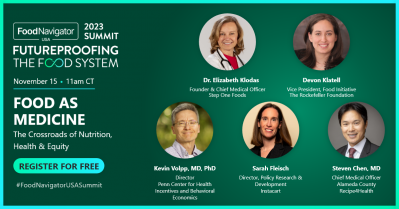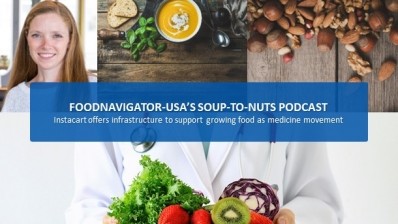Food insecurity climbs alongside inflation as federal nutrition assistance enhancements end

Last year, 17 million US households – or 12.8% – reported they struggled at some point in the year to provide enough food for all members of their families because of a lack of resources. This is statistically significantly higher than 13.5 million households – or 10.2% – that reported the same in 2021 and the 10.5% in 2020, according to the US Department of Agriculture’s Economic Research Services report Household Food Security in the United States in 2022 published yesterday.
Likewise, the percentage of US households struggling with very low food security, meaning some household members had to reduce food consumption and their normal eating patterns were disrupted at times in the year due to limited resources, also increased to 5.1% in 2022 from 3.8% in 2021 and 3.9% in 2020, according to the report.
While children are usually shielded from food insecurity by other household members who go without so they can eat, 8.8% of US households with children experienced food insecurity in 2022 – up from 6.2% the previous year, the report revealed.
These numbers are “a sobering reminder that, while the vast majority of Americans are able to affordably feed themselves and their families … many Americans faced the heart-breaking challenge last year of struggling to meet a basic need for themselves and their children,” USDA Sec. Tom Vilsack said in a statement.
Calls to bolster SNAP, school meals
The timing of the dip in 2021 and subsequent increase in 2022 aligns with an increase and then decrease in additional funding to help feed Americans during the pandemic – underscoring the importance of and need to fund anti-hunger programs, he added.
“The uptick in food insecurity … occurred at a time when significant safety net enhancements that helped people through the worst of the pandemic began to end, including the expanded Child Tax Credit, universally free school meals, and, in a number of states, higher [Supplemental Nutrition Assistance Program] benefits,” he explained.
“The report is a stark reminder of the consequences of shrinking our proven safety net, and it underscores the need to deliver on the Biden-Harris Administration National Strategy on Hunger, Nutrition and Health,” he added, stressing “that starts with the urgent need for Congress to fully fund [the Special Supplemental Nutrition Program for Women, Infants and Children] and continue the 25-year track record of bipartisan consensus to make sure every eligible low-income mom, infant, and child can the vital, developmentally appropriate nutrition they need to thrive.”
The report also reinforces the need for a Farm Bill that bolsters SNAP benefits and for states to offer Summer EBT programs that offer children in the summer the same access to healthy school meals that they receive during the academic year, Vilsack said.
Nine out of 10 Americans struggling with food insecurity surveyed by Feeding American agree Congress should make it easier for Americans to access food assistance, according to the group’s Elevating Voices: Insights Report published last month.
As such, Feeding America argues Congress should set SNAP benefits at “an adequate level to ensure individuals and families can purchase enough nutritious food.”
It also argues Congress should improve and simplify access to school meals by expanding community eligibility and increasing access to free meals.
Inflation continues to squeeze food budgets
The increase in food insecurity also aligns with a food inflation that reached 40-year highs with grocery prices increasing 11.4% in 2022 on top of 3.5% in 2021.
While production costs have stabilized and ebbed in the past year, suggested retailer prices have not dropped – rather some of have continued to climb as manufacturers try to close the cost-price gap.
Aware of consumers’ struggles, many manufacturers have introduced smaller pack sizes at lower price points and larger packs at lower prices per unit. However, many are reticent to bring back promotions and sales, despite mounting pressure from retailers and shifts in consumer shopping habits that favor less expensive private labor or cut back on purchase volume.
Most people grappling with hunger surveyed by Feeding America agreed inflation and higher food prices have exacerbated hunger in America.
An unequal burden
The weight of food insecurity is unequally distributed, with households that identified as Black, non-Hispanic and Hispanic far more likely to report food insecurity, according to the USDA.
Last year, 22% of Black, non-Hispanic households and 21% of Hispanic households identified as food insecure – up from 20% and 16% respectively. This is higher than the 13% of all households that identified as food insecure and the 9% of White households that identified as such.
That said, households across all demographics saw an uptick in food insecurity in 2022 compared to 2021, according to USDA.
Join FoodNavigator-USA’s Futureproofing the Food System Summit to explore the impact of food insecurity
At FoodNavigator-USA’s upcoming digital Futureproofing the Food System Summit Nov. 14-16, we take a closer look at impact of nutrition insecurity and the impact of socio-economic factors in the panel discussion Resetting the table to ensure equitable access to nourishing and sustainable food.
In this session, we explore the extent and impact of poor nutrition on health, accessibility issues, initiatives to measure and build evidence for a large-scale ‘food as medicine’ movement in the US and policy efforts to support healthy food as a covered benefit. We also look at barriers to equity and efforts to address them.
To tackle these challenges, we will hear from:
- Devon Klatell, vice president, Food Initiative, The Rockefeller Foundation,
- Kevin Volpp, director, Penn Center for Health Incentives and Behavioral Economics,
- Sarah Fleisch, senior director, policy research & development, Instacart, and
- Steven Chen, chief medical officer, Alameda County Recipe4Health
Learn more about this free-to-attend online event and register today.

















